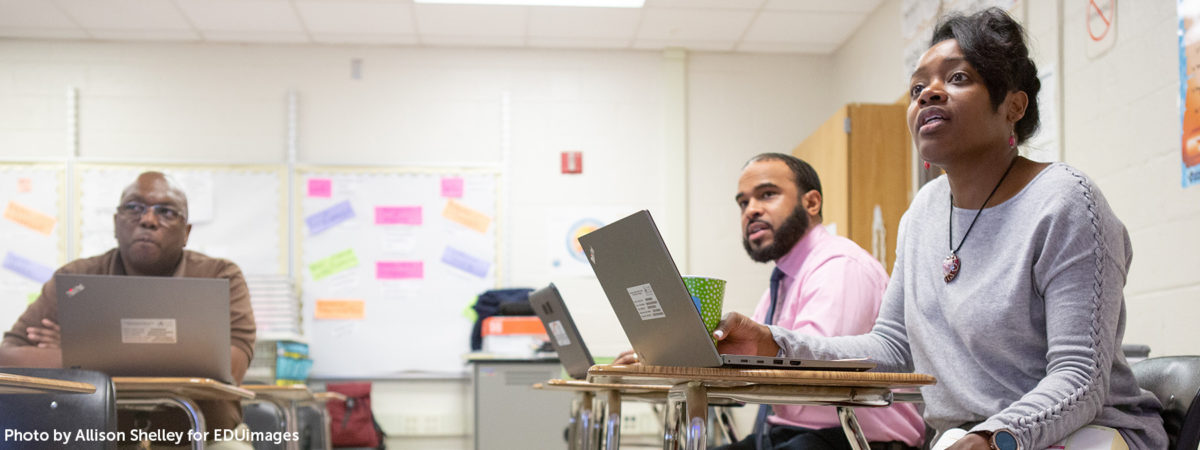
In 2019, the Digital Promise Center for Inclusive Innovation published a report on the impact of the loss of teachers of color as the country’s student population continues to diversify. The loss of teachers of color does not just affect students of color—the effects reverberate, impacting white students, teacher education, school culture, and the teaching profession as a whole.
Our newest report, “Recruitment and Retention: Pilot Solutions Designed by Teachers of Color,” shares the exciting solutions that have been co-designed and developed by teachers of color in partnership with school district leaders, building leaders, higher education institutions, and partners. Our work of Inclusive Innovation embodies an equity-centered approach to education R&D where the solutions to challenges are centered in those most impacted. Over the past three years, we have supported a cohort of districts from the League of Innovative Schools and one charter school network from the National Charter Collaborative in a series of design studios and coaching to enable teachers of color to design solutions to pressing recruitment and retention challenges. And, now their work is emerging as a set of programs, tools, and models.
First, we share the context—the problems of practice each district identified to address recruitment and retention within their local education agency (LEA). The challenges range from the difficulties of recruiting in certain geographic areas to the barriers within the credentialing pipeline, to the challenges of retaining teachers of color due to cultural climates within schools.
The unique aspect of the report is the focus on the process of teachers of color co-designing with leaders—and the learnings from those collaborations. District leaders commented on recognizing the importance of listening and the value in stepping aside to support in various capacities, acknowledging that only the teachers understand how to best solve these challenges. In fact, in one district, the problem of practice that was initially defined by the district completely shifted when the leader realized—after listening to his teachers—that focusing on recruitment would not solve their issue, because teachers of color were not staying in the district. As a result, the district pivoted their problem of practice to focus on retention knowing that if they can retain teachers, then recruitment will be easier.
The report provides an overview of each solution that was developed during this phase of the process, including a Black male fellowship program designed in partnership with the He is Me organization that creates a pipeline for Black high school students to enter the profession, as well as a new regional teacher network that offers a valuable and necessary teacher of color community to incentivize retention across the region. The partnerships between these LEAs and their teachers of color demonstrate how school districts can create authentic and inspired recruitment and retention programs.
In fall of 2023, we will release the final report focused on the impact, results, and sustainability of the recruitment and retention programs.